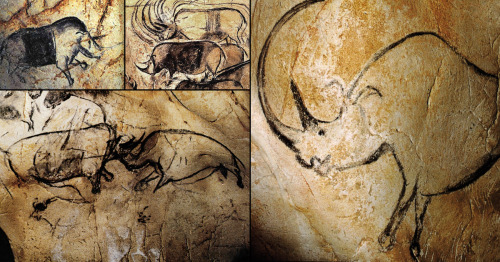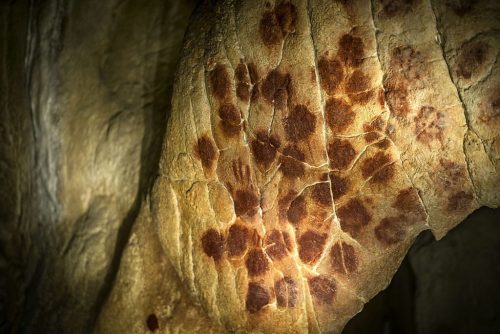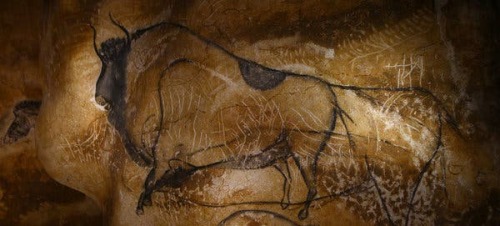#chauvet
Chauvet Cave
The Chauvet cave is located in southeastern France in the department of Ardèche. This cave is extraordinarily well preserved making it one of the most important prehistoric sites in the world. The paintings inside this cave are also one of the oldest pieces of art ever created, almost twice as old as the Rouffignac cave art.
The paintings inside the cave, and the cave itself, were discovered not too long ago. On sunday, 18th december 1994, Jean-Marie Chauvet, Eliette Brunel and Christian Hillaire explored the area on the left side of the Ardèche river. All three of them were experienced in speleology and believed that there might be some underground caverns present in the area. They were right, the three did discover an underground cavern which was full with hundreds of paintings, it was truly a magnificent discovery.
Hundreds of animal paintings belonging to at least 13 species have been discovered thus far. What is interesting, these paintings are quite different from paintings found in other prehistoric caves. Normally animals such as mammoths, rhinos, deer and aurochs are depicted on paleolithic cave paintings but the Chauvet cave is full with animals such as: horses, cave lions, bears, hyenas, rhinos and wisents.
Not only does this cave contain depictions of animals, several abstract markings, hand prints and even some possible shamanic figures, most notably a humanoid figure with a bison head which resembles the Minotaur a bit. There is even a drawing that can perhaps represent a volcano erupting. Another amazing aspect of the Chauvet cave art is that the animals were sometimes put into a ‘scene’ such as animals hunting, fighting for territory or mating rights.
Who were exactly the humans who created all of these paintings? Through dating techniques it is determined that the cave was inhabited during two periods of time. The oldest period dates back to 37,000-33,5000 years ago and thus it were humans belonging to the Aurignacian culture who were partly responsible for the art. The second period, 32,000-27,000 years ago, was during the Gravettian period. The paintings in this cave are at least 30,000 years old and were made by the first anatomically modern humans in Europe.
Not only paintings were found inside of this cave. Footprints of cave bears were discovered, fossilized bones of animals such as cave bear skulls and ibex skulls. The most interesting of these finds are perhaps the footprints of a young child and a wolf walking next to each other. If both the wolf and child walked there at the exact same time, it could mean that the domestication of the dog happened a lot earlier than previously thought.
The cave itself is closed off to the public since its discovery in 1994. This is done in order to preserve the paintings inside as other caves which are open to the public, such as Lascaux, show signs of damage by growing mold produced by humans. This is also the reason why the paintings inside are so incredibly well preserved. The cave itself has been sealed off since the paleolithic era until 1994, no human has stepped inside during that period of time, preserving the past inside.
It is however still possible to visit the images and experience the ambience of being in a cave. A gigantic life-sized replica of the cave has been built a few kilometres away from the real cave. The reproduced cave has the same atmosphere as a real cave with sounds, humidity, temperature, lighting and silence. This allows us to visit and experience the paleolithic cave ambience without damaging the real paintings.
Here are images of:
Chauvet cave art,
https://www.youtube.com/watch?v=Q2ycvQ80MdA a video on the cave and the replica,
Post link

“Examination of the Proto Culture”
Acrylic, Spray Paint & Collage on Film
31”x47”
2019

“Examination of the Proto Culture”
Acrylic, Spray Paint & Collage on Film
31"x47"
2019





